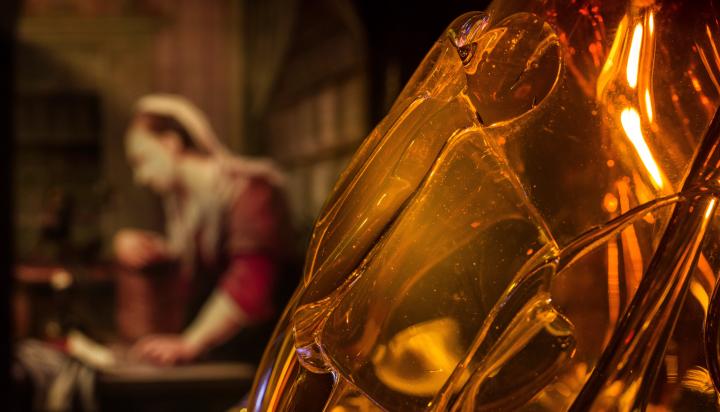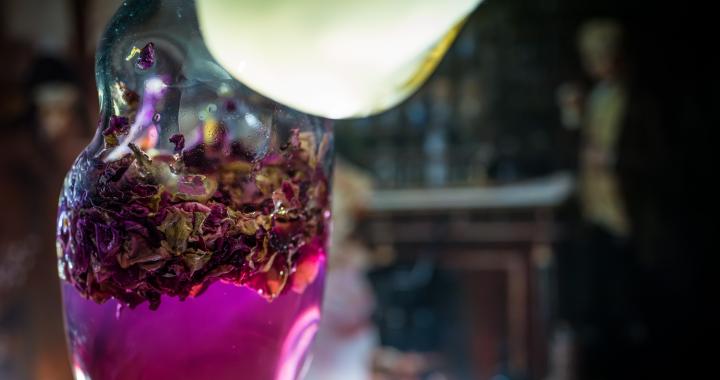Hands-on artwork grapples with ideas of beauty
An art installation based on Edinburgh-led research is to feature in a major exhibition that challenges established ideals of beauty.

The Beauty Sensorium – developed by historian Jill Burke and soft matter physicist Wilson Poon – is part of a show exploring how such notions change across time and cultures.
The multi-sensory commission will invite gallery-goers into the inventive world of Renaissance cosmetics, hair and skincare.
This new work has been created for The Cult of Beauty exhibition at the Wellcome Collection in London in collaboration with art and design team Baum and Leahy. It will introduce audiences to the fragrances, sounds and visuals associated with creating beauty products from the 14th to 17th centuries.
Subtle mix
The installation fuses elements of history and science with the skills of modern craftspeople, including glass blowing, ceramics and design. It shows how Renaissance cosmetic makers wrestled with many of the same technical challenges as modern soft matter scientists.
Both groups are expert in what Professors Burke and Poon describe as ‘goo’, or ‘liquids with bits’ – substances that are neither completely solid nor completely liquid.
“The way materials flow – for example how a skin cream might spread on the skin – affects how they are made, stored and dispensed,” says Professor Burke.
“It is of key importance for the formulation of skin and hair care products now, just as it was in the Renaissance,” adds Professor Poon.
Varying textures
The Beauty Sensorium will include five cosmetic samples of varying textures and viscosities, made from ingredients including mutton fat, mastic gum and rose water.
These will be presented in lit glass vessels that will highlight the life of the substance within, how it moves and transforms when animated by stirring or heat.
Visitors will catch fragrances of each substance as they walk around the installation and hear the sounds made during their preparation.
The presentation of the five types of ‘Renaissance Goo’ demonstrates that much of our scientific knowledge is acquired through first-hand, sensory experiences.
Women’s ingenuity
Professor Burke says: “The artwork highlights the tactile world of women’s lives during the Renaissance era and dispels traditional notions about cosmetics, showing how they were characterised by creativity, ingenuity and invention.”
The installation has been developed as part of the Renaissance Goo project, funded by an APEX grant from the Royal Society.
Professor Burke, a historian of the body and its visual representation, and Professor Poon, a soft matter physicist with special interest in rheology, are trialling historical recipes that may provide insights for beauty products today.
Both hope the project will inspire people to recreate the recipes themselves and become scientists in their own kitchens.
A video featuring Professor Burke and Dr Andreia Fonseca da Silva, a research fellow from the Edinburgh Complex Fluids Partnership who formulated the cosmetic samples on show, will highlight the commonalities – and differences – of inventiveness in the lab and at home.

Human experience
The Cult of Beauty takes place at The Wellcome Collection – a free museum and library in London that explores health and human experience. It runs from 26 October to 28 April 2024.
The show examines how morality, status and health have shaped ideas about beauty throughout history. It will also consider how these ideas have been impacted by age, race and gender.
By encouraging gallery-goers to question established norms, curators hope to foster dialogue, reflection and more inclusive definitions of beauty.
Professor Burke has recently published an acclaimed book called How to Be a Renaissance Woman, which explores themes highlighted in the exhibition. It featured as Radio 4 Book of the Week from 2 to 6 October.
Related links
School of Physics and Astronomy
Edinburgh Complex Fluids Partnership

